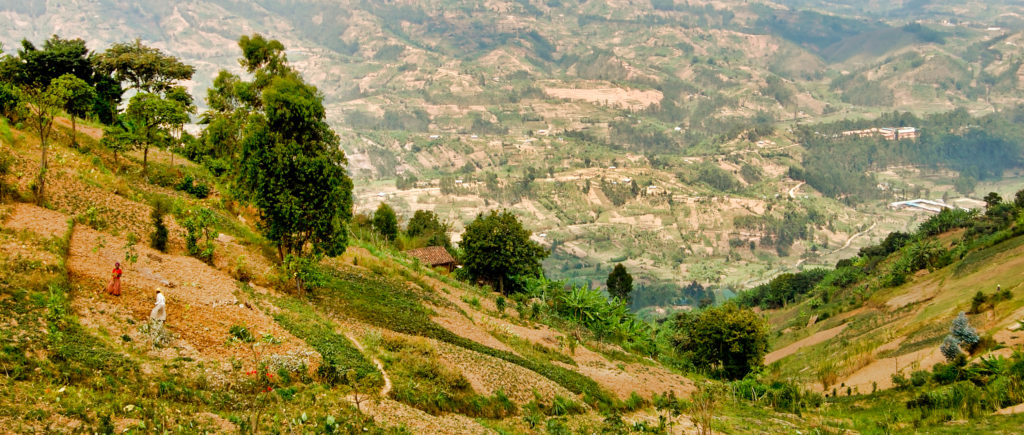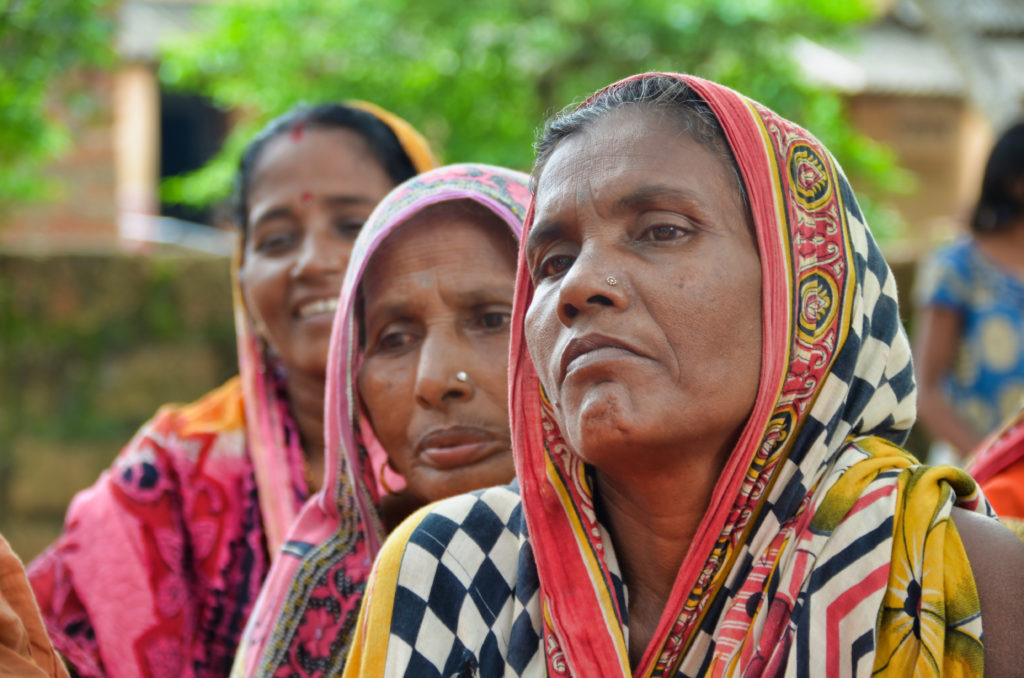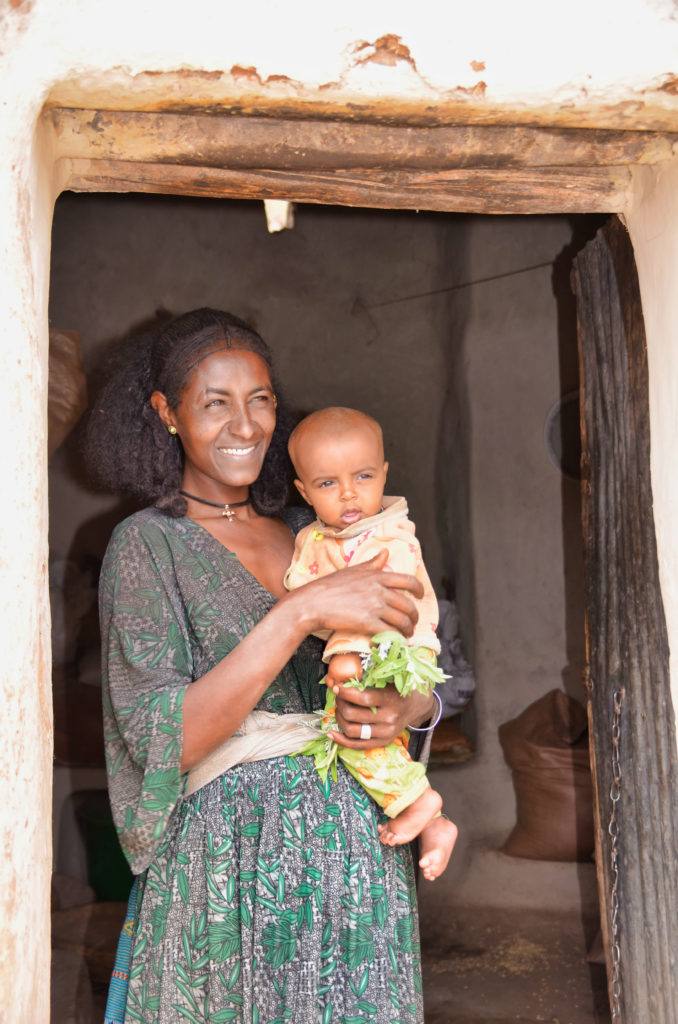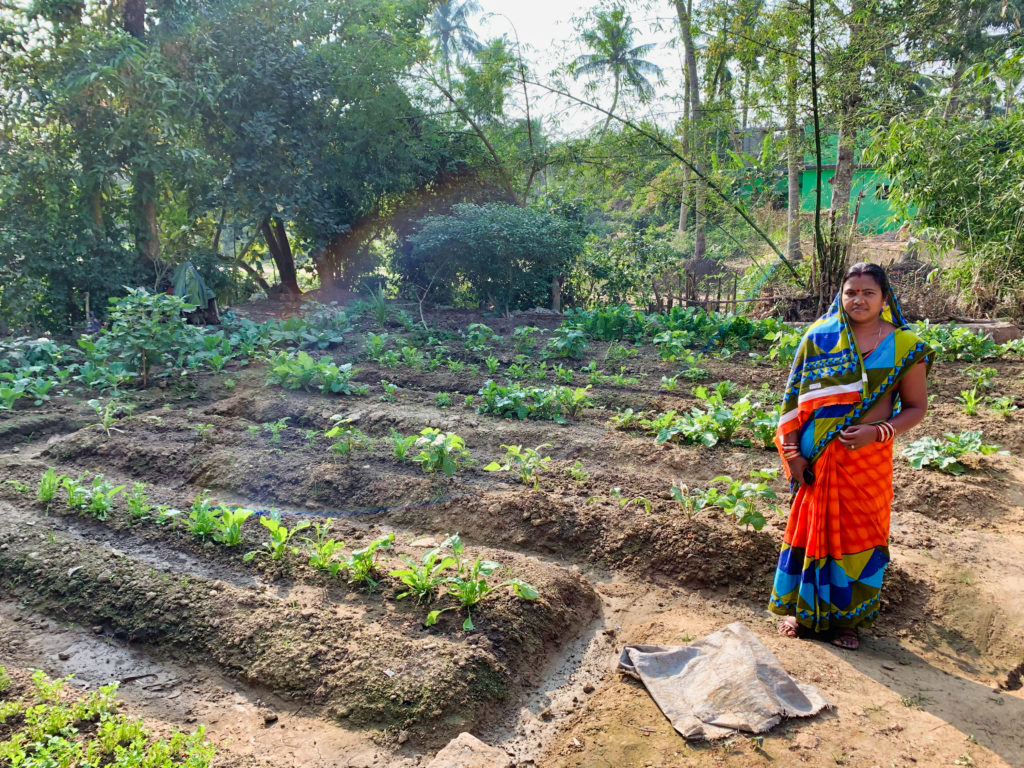This year as we mark the International Day of Rural Women, Kara Czeczotka, PAD’s Senior Associate for New Program Development, canvassed some of our colleagues to highlight the unique challenges confronting rural women working in agriculture, and what can be done to more effectively empower rural women with information to improve their lives.

According to the United Nations, one in three employed women work in agriculture. In addition to unpaid domestic work and care that falls overwhelmingly on women everywhere in the world, women constitute 43% of the agricultural workforce in rural economies. However, women in farming households continue to confront unique challenges which constrain their agency, and contribute to rural poverty. These challenges include inadequate knowledge of, and access to, markets; limited decision-making power across all parts of the agricultural value chain; and constraints on their ability to influence or assert decision-making with regard to services, technology, and financial assets, which limits the ability of rural women to reap the full benefits of their labor.
As we mark the International Day of Rural Women in 2020, we are cognizant that these challenges are compounded and complicated by the impacts of the COVID-19 pandemic and the climate crisis, which – as with so many social and economic shocks – tend to hit women the hardest. “Globally, with few exceptions, every gender and development indicator for which data are available reveals that rural women fare worse than rural men and urban women and that they disproportionately experience poverty, exclusion, and the effects of climate change”. (UN 2020)
PAD’s COVID-related surveys of smallholder farmers in Kenya bear this out: As reported by my colleague Sam Strimling elsewhere on this blog, “Female crop farmers reported greater food insecurity than their male counterparts across several measures: compared to male farmers, female crop farmers reported that household members reported spending fewer days on their own farms and paying higher prices for fertilizer. Female crop farmers were also significantly more likely than their male counterparts to report that they had had to rely on assistance from family to cover living expenses and having to reduce the size or number of meals served in the 30 days prior to being surveyed.”

It is now more important than ever to understand how we can best respond and address the disproportionate impacts that affect women and girls across the globe. I am privileged to work with remarkable female colleagues who think a great deal about these issues. In this blog post, I have collated their reflections on challenges confronting rural women in smallholder agriculture, and the role PAD can play in addressing societal gender norms, utilizing digital information to empower rural women to be more productive, profitable, and to build more resilient communities.
How would you describe the role of women in agriculture in your country, and what challenges do these rural women face?
Farheen Sayam, Agronomist in Pakistan: In Punjab, women participate in agriculture in many ways, primarily with regard to the cultivation of major crops like rice and maize. Women contribute to sowing, hoeing and weeding, the application of fertilizers, picking of vegetables, harvesting crops, and also assume responsibility for almost all work related to dairy animal husbandry. Additionally, women are involved in poultry rearing, kitchen gardening, and the storage of grains for household use.
Viola Chemis, Dairy Specialist in Kenya: The participation of women in agricultural activities is mainly concentrated at the production level, the least profitable part of the value chain. Women are rarely involved in decision-making processes or leadership structures. Moreover, the vast majority of women do not own assets, such as agricultural land. This limits their investment options and access to finance. Women are also tasked with household work and production activities, including child-bearing, which takes up most of their time.
Deepa Manjanatha, Research Intern for India: Male farmers across Odisha (India) dominate access to agri-production resources relative to female farmers. This difference in access is strongly influenced by gender. This gender gap extends to decision-making power and access to farming knowledge, which is troubling considering the number of female farmers engaged in livestock and fishery farming in Odisha, and the social norms in place that perpetuate and preserve these gaps.
Kalkidan Arega, Senior Project Manager and Acting Director of Partnerships and Operations in Ethiopia: Ethiopian Women contribute as much as 70 percent of on-farm labor in post-harvest activities, for cereals, and make up 60 percent of the labor market. Women in agriculture engage in livestock and crop production, both for subsistence and for commercial use. Some survey results in Ethiopia show women are more involved in milking, processing and selling of milk and milk products (butter and cheese) and have also better decision-making in use and control of income from dairy products. However, marketing and decision-making over revenues usually falls to the role of head of the house, which happens to be the men.

How do you think COVID-19 is impacting rural women relative to other populations?
VC: Rural women with young children overwhelmingly shoulder the responsibility of care for children who would otherwise be in school. Women with older children breathed a sigh of relief since the older children help with household and farm duties. However, with children remaining in the home, in many instances, household food budgets have increased. There have also been reports that more women are having to deal with managing abusive relationships or protecting their children from harm.
FS: Rural women in Pakistan confront escalated COVID-related risks because they lack awareness about COVID-19. This is because they generally do not have access to social media or other sources of information. Rural women aren’t always aware of good hygiene practices or about the relative nutritional value of different foods, and as a consequence, they may not be sufficiently informed to be able to take good care of themselves and their immediate family. Meanwhile, rural women in the milk or poultry business are also affected by economic shocks linked to a lack of transportation between rural areas and larger markets in cities due to lockdowns.
KA: Rural women engaged in informal businesses have been critically affected by restrictions due to the pandemic. In many instances vital social structures and systems are more constrained as resources and attention are refocused on the pandemic. This has contributed to a surge in extreme poverty. Rural women bear these burdens much more so than do men, with reported increases in trafficking and sexual abuse, among other abuses. There is also limited access to sexual and reproductive health services due to diversion of resources to cope with the pandemic.
What’s something surprising you’ve learned in your research or in discussion with female farmers?
DM: Despite the fact that women are engaged in many time-intensive tasks required for raising livestock, they often are not a part of the decision-making processes, animal care coordination processes, and/or financial transactions. Much of this seemed to be because women don’t have access to information on these topics and have traditionally been given tasks that are related more directly to caring for the livestock.
KA: During field visits it was surprising to speak to female headed households and see how knowledgeable they were on agronomic practices, and how eager they are to receive more information and training to learn more, even though there are low literacy levels.
In what ways do you think behavioral economics and digital agriculture can be used, or used more effectively, to improve the lives of rural women?
KA: Special attention should be given to digital advisory focused on women. Collecting better data on farmers broken down by gender will help us know the ratio of women farmers we are reaching and helping.
DM: By better understanding the perspectives of female farmers and women involved in agricultural value chains and the barriers faced by women, we can identify opportunities for closing gaps with technology, and more effectively develop programs that shift power dynamics in a way that female farmers feel comfortable with. It is important to pay attention to gendered barriers, social conditions and norms, decision-making power, task allocation and labor division, and the impacts of recommended practices on time and productivity.
FS: Leveraging technology and capabilities to provide training to rural women can create awareness about good hygiene practices and the advantages of eating nutritious foods (focusing on existing limited resources and providing information in their local languages), as well as awareness around cell phones, tablets, etc. Additionally, digital advisory can focus on support for existing supply chains that are disproportionately managed by women – such as organic kitchen gardening in Pakistan – not only for personal use but on a commercial basis.
VC: With a better understanding of gender dynamics, extension information can be refined and targeted to promote the inclusion of women along specific value chain development, and inform the development of gender-sensitive interventions and policy making.

To understand more of PAD’s current research on the topic, I spoke with Theresa Solenski, PAD’s Research and Program Associate. Our research team is pursuing a number of cross-cutting initiatives to facilitate learning across teams and geographies on particular issues, such as gender and digital literacy. Theresa is leading research for PAD’s gender-focused cross-cutting learning initiative. In collaboration with Jessica Zhu (PAD Researcher) and Kaitlyn Turner (former East Africa Research Manager), Theresa has been engaged with thinking through what we as a team can learn from existing literature on gender in agriculture, with the ultimate goal of applying this to, and adapting, our services to better serve female farmers.
TS: Women in our countries of operation often provide 50% or more of agricultural labor, but have very little control over the monetary decisions or allocation. We want to make sure that women are equipped with the information they need to contribute to agricultural decisions, and have the ability to fulfill choices. This could be done by trying to do a better job at targeting women with content in areas in which women already have decision-making power.
One of our initiatives in India aimed to do just that. I learned more about the impacts of this initiative from Swetapadma Patra, PAD’s Senior Supervisor of the PADIF call center in Odisha, India. Sweta supported training for the kitchen gardens initiative that PAD piloted last summer. She noted how this service helped improve interpersonal relationships and skills development among female farmers exposed to the pilot. One impact she saw was “increased participation in decision-making for kitchen gardens, promoting inclusive growth intellectually, economically and socially.”
SP: Kitchen gardens directly contributed to household food security by increasing availability, accessibility, and utilization of food products. Food items produced in kitchen gardens also added to the family nutrition and diversification. The initiative improved women’s social status as well as their awareness with regard to the importance of a nutritional diet for their families.
How can we push ourselves to best serve the needs of rural women? We’re still learning and iterating as we go.
TS: When you’re providing women with agricultural extension services or trying to get them more involved in agriculture practices, you risk making them more time-poor. We want to be careful about giving women too much to do, on top of their other responsibilities. Consequently we focus on sending practical and simple advice that is most important for facilitating high value behaviors. One idea is incentivizing women to switch to higher value crops, and to provide them with information about market access and on how to sell the crops herself.
FS: Rural women lack access to new technologies. They need awareness facilitated through training and refreshers from various resources in the industry. The more the rural woman will be aware, the more she’ll be able to perform best, while improving earnings and autonomy.
VC: Women and children living in rural agricultural households dedicate most of their time providing family labour. By providing customized digital extension services, we anticipate it will contribute to the adoption of better farming practices leading to increased production, and subsequently, income. With the adoption of new technology and practices, it is my hope that it will reduce the time spent by women working on their farms.
DM: Ultimately, there is a lot to think about in this space and a lot to learn from female farmers in the field. By improving our understanding of their needs and their perceptions of the pain points they face, we could use our technology to make their lives easier, especially considering that female farmers/women in agriculture are often burdened with numerous other tasks and are generally time-poor to begin with. Technology can be leveraged to make their lives easier and to help empower them with information and resources they may not have been able to access without a technological intervention.
Interviewee responses have been edited for length and clarity.

Stay Updated with Our Newsletter

Make an Impact Today


